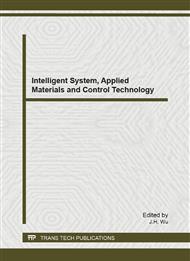[1]
Assimakopoulos, V.D. ApSimon and H.M., Moussiopoulos, N.: Numerical study of atmospheric pollutant dispersion in different two-dimensional street canyon configurations. Atmospheric Environment Vol. 37(2003), p.4037–4049.
DOI: 10.1016/s1352-2310(03)00533-8
Google Scholar
[2]
Baik, J.J. and Kim, J.J.: A numerical study of flow and pollutant dispersion characteristics in urban street canyons. Journal of Applied Meteorology Vol. 38(1999), p.1576–1589.
DOI: 10.1175/1520-0450(1999)038<1576:ansofa>2.0.co;2
Google Scholar
[3]
Baik, J.J., Kim, J.J.: On the escape of pollutants from urban street canyons. Atmospheric Environment Vol. 36(2002), p.527–536.
DOI: 10.1016/s1352-2310(01)00438-1
Google Scholar
[4]
Chan, A.T., So, E.S.P., Samad, S.C.: Strategic guide-lines for street canyon geometry to achieve sustainable street air quality. Atmospheric Environment Vol. 35 (2001), p.5681–5691.
DOI: 10.1016/s1352-2310(01)00483-6
Google Scholar
[5]
Chan, A.T., Au, W.T.W., So, E.S.P.: Strategic guidelines for street canyon geometry to achieve sustainable street air quality—part II: multiple canopies and canyons. Atmospheric Environment Vol. 37 (2003), p.2761–2772.
DOI: 10.1016/s1352-2310(03)00252-8
Google Scholar
[6]
Flaherty, J.E., Stock, D., Lamb, B.: Computational fluid dynamic simulations of plume dispersion in urban Oklahoma City. Journal of Applied Meteorology and Cimatology Vol. 46(2007), p.2110–2126.
DOI: 10.1175/2006jamc1306.1
Google Scholar
[7]
Hunter, L.J., Johnson, G.T., Watson, I.D.: An investigation of three-dimensional characteristics of flow regimes within the urban canyon. Atmospheric Environment Vol. 26B(1992), p.425–432.
DOI: 10.1016/0957-1272(92)90049-x
Google Scholar
[8]
Huang, H., Akutsu, Y., Arai, M., Tamura, M.: A two-dimensional air quality model in an urban street canyon: evaluation and sensitivity analysis. Atmospheric Environment Vol. 34(2000), p.689–698.
DOI: 10.1016/s1352-2310(99)00333-7
Google Scholar
[9]
Jeong, S.J., Andrews, M.J.: Application of the - turbulence model to the high Reynolds number skimming flow field of an urban street canyon. Atmospheric Environment Vol. 36(2002), p, 1137–1145.
DOI: 10.1016/s1352-2310(01)00569-6
Google Scholar
[10]
Kim, J.J., Baik, J.J.: Urban street-canyon flows with bottom heating. Atmospheric Environment Vol. 35(2001), p.3395–3404.
DOI: 10.1016/s1352-2310(01)00135-2
Google Scholar
[11]
Kim, J.J., Baik, J.J.: Effects of inflow turbulence intensity on flow and pollutant dispersion in an urban street canyon. Journal of Wind Engineering and Industrial Aerodynamics Vol. 91(2003), p.309–329.
DOI: 10.1016/s0167-6105(02)00395-1
Google Scholar
[12]
Kim, J.J., Baik, J.J.: A numerical study of the effects of ambient wind direction on flow and dispersion in urban street canyons using the RNG - turbulence model. Atmospheric Environment Vol. 38(2004), p.3039–3048.
DOI: 10.1016/j.atmosenv.2004.02.047
Google Scholar
[13]
Parra, M.A., Santiago, J.L., Martín F., Martilli, A., Santamaría, J.M.: A methodology to urban air quality assessment during large time periods of winter using computational fluid dynamic models. Atmospheric Environment Vol. 44(2010).
DOI: 10.1016/j.atmosenv.2010.03.009
Google Scholar


